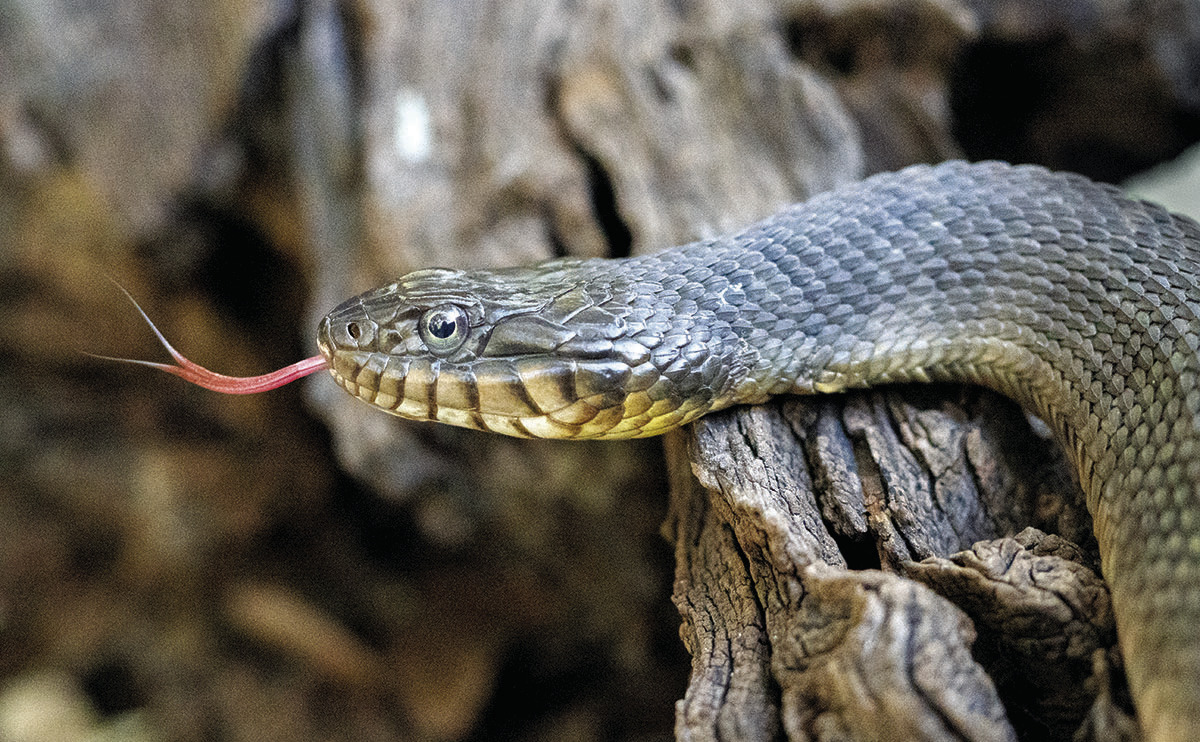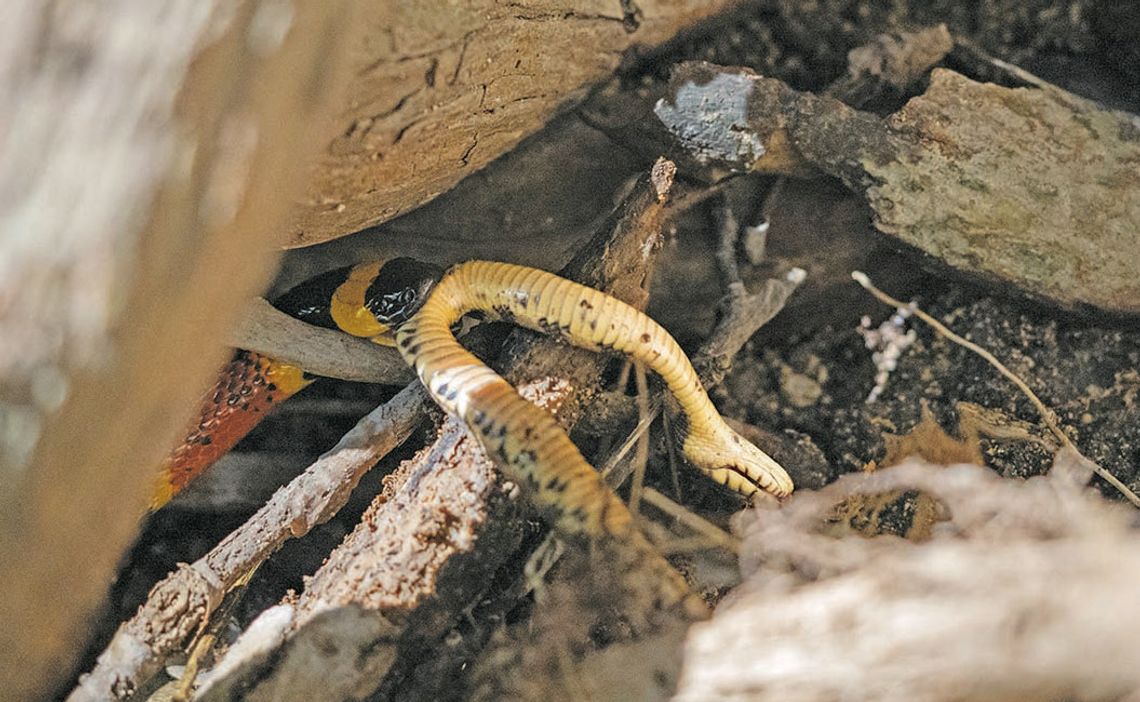‘Bioblitz’ at The Cibolo takes stock of reptiles
A recent “bioblitz” at the Cibolo Center for Conservation offered two important lessons about water snakes — they are smarter than they look and they help maintain an environmental balance.
That’s the view from naturalist Delaney Kempf, who took part in last weekend’s event conducted each spring and fall to assess the Cibolo Nature Center’s ecological state.

A Texas Coralsnake eats a juvenile while a Diamondbacked Watersnake slithers off a log along Cibolo Creek. Photos courtesy of De Delaney Kempf
Scientists, biologists and others attend the free survey, which provides educational mini seminars as volunteers seek out birds, butterflies, plants, mammals and reptiles.
Oct. 10 and Oct. 11 involved a search for water snakes under rocks, in tall grass, throughout the woodland and Cibolo Creek.
Kempf captured a water snake Oct. 11, allowing volunteers to get a closer look at a species she said is vital to the natural order.
“Water snakes are a really good indicators of what your water quality is,” Kempf said, adding the female snake she temporarily collected was tagged the year before. “They love eating fish and keep the fish population under control.”
There are also plenty of misconceptions about water snakes, with the majority being nonvenomous, unlike the water moccasin or cottonmouth.
For example, Kempf said snakes often recognize a specific human being once they have become accustomed to a face and a scent.
“By the third day of me trying to capture this water snake, she recognized me,” Kempf said. “Snakes are just a lot smarter than we give them credit for.”
Kempf said try to avoid eye contact with snakes so the reptile won’t react to protect itself.
“Just try (to) avoid killing them,” she said. “They are very necessary for the environment.”
Kempf also touched on misunderstandings surrounding the species that create unnecessary fear.
“If you have a water snake that drops out of the tree and startles you, it’s because they think you’ve seen it,” she said. “Their biggest defense is to try and remain invisible.”
The group she spoke to learned water snakes tend to stay in groups, unlike cottonmouths, which are carnivorous and volatile — even with each other.
The cottonmouth and non-poisonous water snakes are often confused, but there are ways to tell them apart, Kempf said.
“I say they (water snakes) have ‘derpy’ faces,” she said. “They have the round pupils, round faces. Cottonmouths are all angles. The eyes, the eyebrows, the jawline. They’re all pointy, no roundness.”
The gestation period is in the spring, when males are particularly aggressive pursuing a female. During this time, the water snakes group together more often.
“Their biggest issue for the babies is predation,” Kempf said. “Primarily humans, but also predatory birds, raccoons and squirrels.”
The Cibolo has tagged about 70 water snakes.
To visit The Cibolo, stop by 140 City Park Road. Those wishing to attend the next bioblitz in spring can visit cibolo. org.









Comment
Comments